
When you think of wealthy individuals, do you think of playboy heirs and vapid heiresses? Perhaps slovenly lottery winners? People who just stumbled or lucked their way into wealth?
Maybe you picture self-indulgent tycoons, with eight cars and four homes spread across three continents?
Thomas Corley studies the habits of wealthy individuals, and how they differ from the average American’s. After five years studying and surveying thousands of millionaires, he compiled his results into a bestselling book, Rich Habits: The Daily Success Habits of Wealthy Individuals. His studies continue, and he regularly releases updated survey data.
While there are a handful of lazy heirs and lucky lottery winners out there, most wealthy people accumulated their own wealth, through hard work, frugality and financial discipline. Don’t believe me?
Roughly two-thirds of America’s billionaires are self-made. As for self-made millionaires, they make up even more: four-fifths to be exact. No trust fund, no extravagant inheritances, no silver spoon.
And lottery winners? Forget about it. A shocking 70% of major lottery winners go broke within three years.
Why is that? Because sustainable wealth requires a state of mind, discipline, and daily habits to maintain. Here are 11 of those habits of wealthy people, that you can model to join their ranks.
1. Millionaires Own Real Estate
Well, this is a real estate investing and passive income blog, after all! Of course we started with real estate.
The overwhelming majority of millionaires own real estate, making it by far the most popular alternative asset class. That includes their own home, second homes, investment properties, and fractional ownership of investment properties through partners or programs like Arrived Homes and Roofstock One.
Over a third (35%) of millionaires take it even further, investing in REITs such as Streitwise and Fundrise to layer on additional real estate classes, beyond their own home and investment properties.
Some estimates place the number even higher, asserting that as much as 90% of millionaires over the last two centuries have achieved their wealth in part due to real estate investments.
And as an industry, real estate has produced the third highest number of billionaires worldwide.
The rich believe in real estate investing. For good reason, too: real estate changes the math of financial independence and early retirement, so you don’t have to rely on the 4% Rule to retire.
2. …But Their Own Homes Are Modest
Throw out your preconceptions about mansions and sprawling estates. Almost two-thirds of US millionaires live in modest, middle-class homes, per Tom Corley’s research.
Granted, the term “modest, middle-class home” leaves some room for interpretation. But these are generally 1,500-3,500 square-foot homes, in clean, safe neighborhoods with good school systems.
Hardly extravagant.
Housing is the highest monthly expense for most of us. Because most millionaires exercise such restraint with their housing costs, buying a much less expensive home than they can afford, they can funnel a higher portion of their income toward investments. Which is, of course, how they stay millionaires.
Some savvy souls even house hack to live for free!
3. They Live on a Firm Budget
The overwhelming majority of millionaires impose a strict budget on themselves.
Fancy dinners out, going to the movies all the time, frequent clothes shopping, monthly massages, weekly pedicures, buying the flashiest car you can and then replacing it every two years? This is what keeps middle class folks middle class, rather than rich. They’re not going anywhere fast, despite that flashy car.
Millionaires put themselves on a budget, with a high savings rate, which they turn around and invest. These investments in turn produce more passive income, which they continuously reinvest, creating a snowball effect for their money.
As a simple starting point, base your monthly budget on four weeks’ after-tax income. You can count on that in any given month, not your annual income divided by 12. Occasionally, you earn six weeks’ income in a month, if you get paid biweekly. Put that “bonus paycheck” straight into investments.
If you struggle with budgeting, try the old fashioned envelope system. On the first of the month, visit the ATM and pull out your monthly spending budget. Split it into weekly chunks: that’s what you can spend for the week. Total. Including groceries.
You’ll think a lot harder about every dollar you spend, when it’s denoted in physical bills in your wallet. You’ll also subconsciously track what your spending – something your mind doesn’t do when you just swipe plastic.
Don’t think of budgets as a restriction. Rather, imagine budgets as a blueprint to build wealth.
4. They Automate Good Financial Behavior
You can’t rely on discipline and motivation for good financial habits. Sometimes they’ll show up for you, but not always.
Automate your savings by asking your employer to split your paycheck to be direct deposited into two accounts. Set up your operating budget to go into your checking account, and your savings to go directly into your savings account. That way, you won’t be tempted to spend it.
If your employer can’t do that, set up automated recurring transfers for each payday.
You can also automate many investments. Set up a robo-advisor account to pull money out of your savings account each week to invest. I use Schwab’s robo-advisor, which is free.
Some real estate crowdfunding platforms also let you set up automated recurring investments, such as Groundfloor, Concreit, and Fundrise. And while you can’t automate real estate syndication investments, you can dollar cost average real estate investments with our Co-Investing Club each month.
5. Their Money Works for Them
As we touched on above, budgets aren’t about denying yourself, they’re about creating that feedback loop to generate more income and wealth.
Think of each dollar that you invest as a little green worker that goes out and works directly for you, 24 hours/day, 7 days/week. Exhibit A: rental properties. You invest a down payment and closing costs, and then collect rent forever. That money you invested keeps working for you indefinitely, putting passive income in your pocket.
Look no further than Ashley and Kevin Thompson, who aggressively saved money for a few years, then started investing in rental properties. They now earn around a $40,000 annual income in rental cash flow — enough to cover their modest expenses.
In other words, they’ve reached financial independence. Ashley retired at age 30.
A balanced portfolio includes equities as well, ideally with a mix of US and international funds, and a blend of small-, mid-, and large-cap funds. Where rental properties create instant income, a healthy mix of stock market index funds or ETFs balance risk and grow in value over time. The returns can compound, as dividends are reinvested. (Further reading: Real Estate vs. Stocks for FIRE.)
Get as many little green workers out there in the world earning money for you as you can!
6. They Invest in Themselves
Investing in yourself includes education, but it doesn’t end there. Formal education is a great start, from a college diploma to a graduate degree. But education needs to be constant, ongoing dedication to learning new skills, honing old skills, staying ahead of constant shifting technology and trends.
The rich listen to audiobooks while in the car or on the metro. They read the news over their breakfast, or listen to it while they brush their teeth. They attend conferences, seminars, webinars. They evolve, every minute of every day. To stay static is to become obsolete.
Beyond education, investing in yourself also means physical fitness, healthy eating, moderation in your vices. No one says you can’t enjoy a bottle of barolo, but when a vice becomes a habit, it becomes a problem. Likewise with that sloppy meat-lovers pizza, or that “Made Under Cuban Supervision” cigar.
In the early 20th century, gout was considered “the rich man’s disease” because it is exacerbated by lack of physical exertion. Nowadays how many overweight, gouty rich people do you see? None. They’re all out busy exercising, working, attending seminars and spending active time with their families.
 7. They Constantly Reassess Their Goals & Progress
7. They Constantly Reassess Their Goals & Progress
Success doesn’t just happen. People create success based on goal-driven actions and behavior.
Whatever success you’re looking for, from financial to romantic to fitness to good parenting, if you want to actually achieve something you need to define it. I wanted to get married, but I’d exhausted all my friends’ single friends, and I was sick of meeting women at bars. So I went on dating websites, sifted through hundreds of profiles, exchanged a bunch of “winks” and emails, and went on dates with 20-30 women that year before eventually meeting my future wife.
If the above sounds exhausting, well… at times it was. But goals take work!
It’s the same for anything you want to achieve. Before you can create a plan to succeed at something, you first need to define it. Then you can build and define your plan. And work hard. Then refine some more. And then work even harder.
And then one day you reach your goal, and it’s time for a new goal.
Start thinking in terms of lifestyle design, writing out your ideal life in clear detail. Once you know exactly how your ideal lifestyle looks, you can start taking steps to make it a reality.
One last tip: build goal review into your morning ritual. Spend five minutes each morning reviewing your long-term goals. Then think about what actions you can take that day that will move you closer to those long-term goals. Keep in mind that short-term demands often feel urgent, but they usually aren’t very central to the broader goals that will actually improve your life.
8. They Take Responsibility for Everything
If you’re like most people, you rant and rage when something bad happens, and blame everything but yourself. Your computer crashes? You curse it out (extra points for colorful and creative curses). Your car breaks down? Your power goes out? Your flight gets delayed or canceled? Curse curse curse.
The most effective people spend a moment getting their frustration out of their system, then they take responsibility for the problem. If their computer crashes, they access their cloud backup. Or they accept responsibility that they failed to keep a cloud backup. Either way, they internalize that they are responsible for the outcome, not their cranky computer.
Now think about the least effective person you know. They would whine and moan that their stupid computer crashed, and it’s not their fault, and how are they ever supposed to get anything done with a computer that crashes on them?
They always have bad luck. Nothing’s ever their fault. They’re a victim.
Victims are slaves to circumstance. Good things happen, bad things happen, their lives are ruled by external forces.
Effective people are never victims. They are always responsible for their successes and failures, because they’re responsible for everything that happens in their lives, regardless of the circumstances.
9. They Associate with Other Effective People
Want to take on the mindsets and habits of wealthy people? Spend time with successful people.
Jim Rohn popularized the quote “You are the average of the five people you spend the most time with,” and it’s true.
Effective, successful people think differently. They talk differently. When working an obstacle pops up between them and their long-term goals, they start from the assumption that there is a way through. You can model their thought processes, by changing your mindset from “Can I make this work?” to “What are five ways I could make this work?”
The rich don’t lean on words like “impossible” or “can’t,” but rather look at problems in terms of what options are cost effective, what is likely to yield a return. You can accomplish anything, it’s merely a matter of whether it makes sense to do. Whether the juice is worth the squeeze.
Effective people talk about ideas, world events, new technologies, new developments. Spending time around them will stimulate your mind, encourage you to adopt effective mindsets and habits.
After all, wealthy people have a lot more than 12 habits that make them effective, so grow by spending time with the kind of people you want to be more like.
If you want financial independence, spend more time with people who are actively pursuing financial independence.
10. Millionaires Are Frugal (But Not Cheap)
Over two-thirds of millionaires admit to being frugal, per Tom Corley’s research. By contrast, roughly two-thirds of the poor admit to being cheap.
What’s the difference between frugal and cheap?
Being frugal means carefully watching spending, and paying the minimum amount for high-quality goods and services.
Being cheap means buying the cheapest product or service available, regardless of quality.
Here’s a quick personal example: I used to buy cheap flip flops. I’d go through a pair in a summer, then end up spending another $15 the next summer for a new pair.
One day my then-girlfriend (now wife) Katie and I were walking by a surf shop that had a 50%-off sale on Rainbow flip flops. She pulled me into the store and insisted I buy a pair of Rainbows. “Who the &%@$ spends $60 on a pair of flip flops?!” I spluttered. Katie replied calmly that 1) I wasn’t going to spend $60, I was going to spend $30, and 2) these flip flops will last me 8-10 years. I didn’t believe her, but I needed a new pair of flip flops so I bought them.
That was five years ago. I wear these flip flops every day, and they still have many years of life left in them.
The rich buy high-quality items at bargain prices. But they don’t buy for the sake of buying, they don’t shop for fun — they buy what they need.
Would you guess that any millionaires buy clothes at Goodwill? It turns out that nearly one in ten millionaires shop there. Who’d have thunk?
11. They Buy Used Cars
Nearly half of US millionaires only ever buy used cars. Of the remaining 56%, most buy used or new cars depending on the circumstances, but they recognize the inherent loss when buying a new car.
Depreciation is the largest single cost associated with buying a new car. Within the 60 seconds it takes to drive out of the lot, an average new car loses 11% of its value. Within a year, new cars lose 25% of their value on average. That figure rises to 45% by the third year.
Why do people pay such an absurd premium for new cars? Is a new car 25% faster, safer, or more reliable than a one-year-old car? No, of course not. People buy new cars for emotional reasons, not for rational ones. They like the idea of being the only person to have ever sat in the driver’s seat. They like the new car smell. Among the less irrational reasons, buying a new car offers the peace of mind of knowing the car wasn’t abused by some redneck who loved drag racing.
But if the average new car sells for $47,077, are these reasons worth blowing an extra $11,769 (25%) to buy the car new versus a one-year-old car?
Most millionaires think not.
12. They Get the Last Laugh with Credit Cards
Credit card companies make their best money on interest. Sure, they make 1.5-3% in transaction fees that they charge retailers, but they make 18-24% interest when cardholders fail to pay in full at the end of each month.
Which is precisely why millionaires always, always pay in full each month.
According to Tom Corley’s research, 81% of millionaires utilize reward-heavy credit cards, and then turn around and pay them in full before the end of each month.
Are you the windshield, or are you the bug? Fiscal discipline helps ensure that you remain the windshield, and nowhere more obviously than with credit card usage.
13. They Instill Good Financial Habits in Their Kids
Why do most lottery winners end up broke within a few years? Simple: most people don’t have strong financial skills.
If you want your children to succeed financially, you need to teach them those skills. We all know they won’t learn them in school.
Start with basic budgeting at an early age, and then get into the fundamentals of investing in stocks and real estate. As they get older, you can even raise your kids to be good entrepreneurs, rather than good employees.
It’s also critical that you bring your spouse and kids onboard with your financial goals. It doesn’t matter how well you plan your budget if your spouse is going to ignore it and spend whatever they like.
Millionaires vs. the Rat Race
“What’s the most I can afford?” is a rat race question for middle-class and poor people. Instead, ask yourself “What’s the least I can budget for this expense and still be happy?”
Do you have to drive a Lexus, or will a Toyota suffice? After all, they’re the same manufacturer; Lexus is just the brand that Toyota uses to add some imaginary glamour so they can charge more for cars with the same engine.
You can truly get on track to escape the rat race when you start living on half your income and investing the rest. But if that’s too austere for you, just start by looking at your home, car, and food costs, and asking “What’s the least I can budget for this expense and still be happy?” My wife and I don’t even own a car at all, but we have a deep emergency fund and a fast-growing net worth.
You might be surprised at how happy you can be in a slightly smaller house, with less yard to mow. And you’ll certainly reach financial independence faster, which is enough to make anyone happy.♦
What poor habits can you swap out to slim your spending and boost your investments? What’s your plan for reaching financial independence?
More Real Estate Investing Reads:
About the Author

G. Brian Davis is a landlord, real estate investor, and co-founder of SparkRental. His mission: to help 5,000 people reach financial independence by replacing their 9-5 jobs with rental income. If you want to be one of them, join Brian, Deni, and guest Scott Hoefler for a free masterclass on how Scott ditched his day job in under five years.

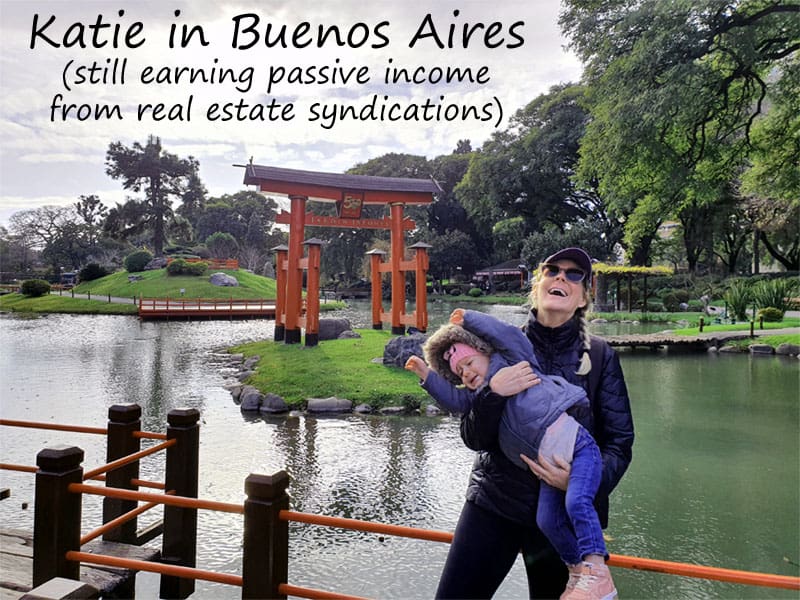







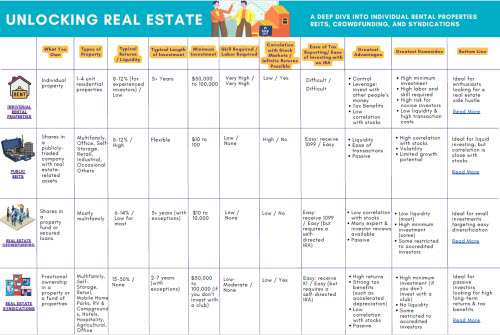



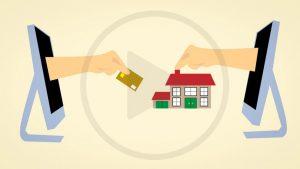

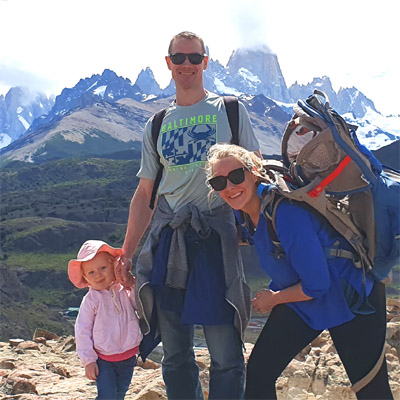


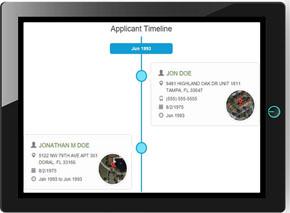




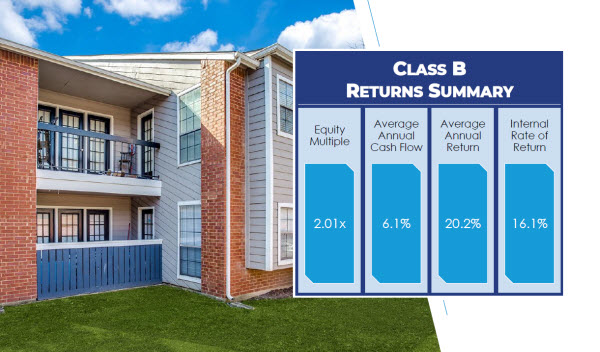



I like that these are things that anyone can start doing. It’s so true, the middle classes are all about showing off how successful they are, how stylish they are, etc., instead of worrying about their long-term wealth.
Another great piece, thanks guys!
I totally agree C. It’s not like “do a 1031 exchange on your second home with an IRA conversion” or some nonsense.
I also hear that millionaires read far more books than average people, and watch far less TV. While I don’t have a study to point to, I suspect this is true!
That is 100% true Maddie – I’ve seen several studies back that up!
I had no idea new cars lost so much money so fast. I know people love to talk about the money you lose when you drive off the lot, but 25% drop in price after one year! That’s nuts. I may never buy a new car again!
This is the kind of hard truths that middle class people need to hear. Most people just love to show off their success, and “keep up with the Joneses,” but it’s a quick way to get nowhere.
No one wants to hear “stop spending so d@mn much and invest it instead” but it’s exactly what most people DO need to hear.
I’m at 5 out of 7. Working to get to all 7!
I consider my self frugal. Per the article, I do 6 out of 7. The one I don’t have is the car. I bought a car Hyndai Elantra in 2011. I still own it and have 100k miles. I will drive this car until it drops. I would rather do that and know what I got and not worry about used cars you don’t know about. Here is to 200k miles
Amen Gene! I drove a 2005 Hyundai Tiburon for 10 years until I moved overseas in 2015. It was an extremely resilient and reliable car, and I got every penny’s worth out of it.
Clearly, every millionaire possesses these qualities. If one thinks of becoming a millionaire, he should have a mindset of acquiring assets first before going for additional liabilities.
I slimmed down my spending & boost my investment when work from home became a thing. I cook my own food, lessened my travel expense, and increased my productivity time. I’m far from obtaining financial independence but knowing those habits and being consistent will surely help me make this a reality in the near future.
Glad to hear it Janet!
Being in the right circle of friends really helps a lot to achieve financial independence. Bouncing back ideas, lending to one another, sharing tips and hacks in one way or another, and a lot more benefits. The best part, we enjoy what we do together and we help each other!
Absolutely Albert!
Am I able to invest in America if I am a residence of Canada if possible
what are the procedures and steps to move forward
Hi Brian, you can invest in the US but you need a US taxpayer ID number. The easiest route there is opening an LLC and getting an EIN for it. Further reading here: https://sparkrental.com/can-non-citizens-invest-in-us-real-estate/